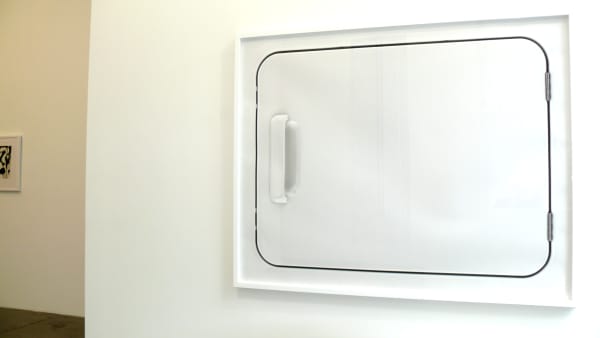Driven to Abstraction: Group Exhibition
Driven to Abstraction is a group show of contemporary artists who together represent a diverse range of entry points into abstraction.
Judy Millar’s paintings, based on gesture, lend themselves to elements of both Abstract Expressionism and Lyrical Abstraction. Millar plays on the notion of gesture in abstraction but adds an ironic twist to the discussion by using screen-printing techniques to generate the final image. Like Millar, Simon Ingram’s non-objective canvases signal more contemporary approaches in his innovative use of modern technologies combined with the hand drawn, in his painting practice. The slug-like painted forms in the two Untitled works appear to devour the formal geometric elements of the painting and one senses that with the passing of time these works will return to the pristine plain white surfaces that existed prior to Ingram making his marks.
Max Gimblett’s large diptych Either/Or from 1983 appears at first glance to be a classic piece of American minimalist painting. However the surface of the work is activated by Gimblett’s masterful use of heavy brushwork to create texture. In the centre of each square a rectangle painted in the same colour and manner as the rest of the painting subtly reveals itself to the viewer. Allen Maddox’s ardent and impassioned paintings established him as one for the most noted Abstract Expressionists New Zealand has produced. Colin McCahon’s Jump painting is indicative of the abstracted landscapes for which is well known.
Although not strictly abstract American Isaac Layman’s photographs offer an alternative perspective on everyday subjects, as the context of his subjects is shifted. By shifting scale and limiting colour creates formal abstract compositions. In Blackout Laymen photographs a blind in a window to produce a work that references the American painter Agnes Martin.
Through myriad approaches, media and materials Driven to Abstraction considers the visual language of abstraction.










